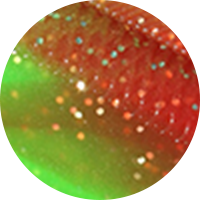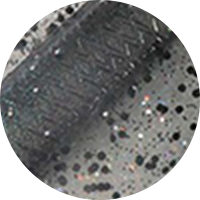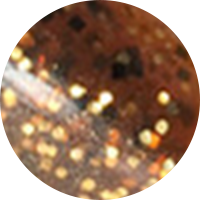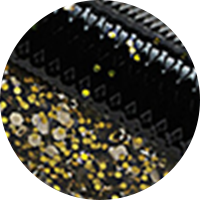Soft plastics have firmly made their mark on the fishing industry since their inception half a century ago. Over the years, anglers of all ages and skill levels have been hooked by these fishy looking pieces of plastic, but the effectiveness and versatility of soft plastics speaks for itself. Soft plastics come in a myriad of shapes, sizes, colours and styles - but what is the difference between them all?
The BCF’ing experts have put together a buyer’s guide to help you in picking the right soft plastics for your individual fishing needs. We will be covering the most important things to consider when buying soft plastics, answering some commonly asked questions, plus giving you some handy tips that will hopefully help to put a bend in your rod.
What to consider when buying soft plastics
Where to use soft plastic lures?
Soft plastics can be extremely effective in a wide variety of locations, from rivers and estuaries to offshore and impoundments. Many larger soft plastics from 5-9 inches are ideal for use offshore while smaller models 2-4 inches work best in still water situations. Soft plastic lures can also be used to target many different fish species. Some soft plastics have been created for specific water conditions, but most can be used in both fresh and saltwater environments.
What fish species can I catch with soft plastic lures?
From trophy snapper, horse barra or even Australian bass the versatility of soft plastics has seen these species and everything in between landed by happy fisherman. It is important when selecting a soft plastic that you “Match the hatch” this is a phrase that was first composed by fly fisherman, but it rings true with soft plastics as well. It means you should choose a style that represents the baitfish commonly found in that area. Bait profile and overall length are the two main things to consider, colour is only a minor factor.
What colour soft plastic lure do I need?
When picking a soft plastics there certainly is no shortage when it comes to colour choices; bright, natural, black or clear and they all catch fish. Thinking about the colour that will work best for you is extremely important but where to begin? Firstly, having a variety of colours at your disposal can make a big difference and has saved many from the dreaded donut (going home empty handed), you just need to try and vary your colours to suit different water conditions. When the water is ultra-clear the fish should be able to see your lure from a distance, so keep things natural and try to replicate baitfish or shrimp. If you have had a bit of rain and the water is looking like your morning coffee, it pays to have something bright - pink, chartreuse and bloodworm have always been solid fish takers in dirty water. If all else fails, try a black lure as it throws a silhouette that fish can easily find.

Bright/Colourful

Natural

Shrimp imitation

Black
How much do soft plastic lures cost?
This is a topic many new to the game get caught out on. Although many soft plastics can look almost identical in the packet, the difference between a high-end soft plastic and budget friendly products will be much more noticeable once you hit the water. High end plastics have been cleverly designed to best replicate real baitfish and other prey species while also using the best materials for creating a lifelike swimming action and providing a longer life expectancy. Cheaper offerings still deserve a spot in the tacklebox and are perfect for working structure or when toothy critters are around.
What are the different soft plastic shapes?

Jerk shad
The jerk shad is a perfect baitfish presentation, with a single or split tail design that is deadly on a range of species, from flathead and Jewfish in the estuaries and snapper through to pelagic’s offshore. Jerk shads require the angler to impart the action through working the rod with a twitch or jerk as the name suggests. Perfect for working deep water or strong currents as the slender profile easily falls through the water with little resistance, the jerk shad comes in sizes ranging from 3” all the way up to 8” to imitate herring, mullet and garfish. Shop Jerk Shad

Paddle tail
One of the most popular baits on the market, the paddle tail has been designed with a large flat tail that moves seductively from side to side as the lure is worked. This added action makes them ideal for beginners as they are extremely easy to use and can draw a strike at any time during the retrieve. The paddle tail can be very effective for mangrove jack and barramundi in the estuaries and equally as handy on the reefs for coral trout and sweetlip. Available in a range of sizes from the subtle 2.5” through to 6”. Shop Paddle tail

Curl Tail
The curl tail has become a firm favourite for many fishermen, from experienced anglers to the first-time flickers, due to their action-packed tail wiggle that comes to life with the slightest touch of the handle. Curl tails are one of the first soft plastics to hit the market and have played a large role in the success of soft plastics in general. Curl tails have proven extremely effective, whether you are chasing bream and bass on the smaller 2 and 2.5” models or tackling murray cod, mulloway and larger reef species with the 4, 5 or even 9”. Shop Curl Tail

Crustacean/Creature baits
High on a fishes most wanted list, there aren’t too many species that will turn down a prawn, yabbie, crab or insect. These baits come standard with claws and antennae that create movement in the water, which entices fish to have a crack. The best way to fish these baits is ultra-slow, making regular contact with the bottom. Creature baits range in sizes from 2” for trout and bream through to 4” great for flathead, mangrove jack and bass. Shop Crustacean/Creature baits
Why should you use soft plastics?
Versatile
One of the best reasons to pick up a soft plastic is just how versatile they can be. By simply changing jig head weights, you can fish the entire water column with a single soft plastic. Whether you are casting for bream and need a light 1/40oz jig head that allows the lure to sink slowly with a finesse approach, or you’re chasing flathead and require a 3/8oz jig head to get you to the bottom quickly and keep you in the strike zone for longer, soft plastic lures are great for targeting a range of fish species.
Effective
There is no denying the effectiveness of soft plastics with fish being landed by happy fisherman from coast to coast. The realistic design and soft texture of a soft plastic ensures fish want to eat them and not let go.
Affordable
Soft plastics are great value for money, with one packet containing as much as 10 pieces to last many outings and hopefully catch you heaps of fish. When you look at the price of bait these days there had to be a cheaper alternative, while other lures may only have one piece per packet, soft plastics have hit the nail on the head.
Ease of use
Without the need to constantly bait your hook and deal with smelly hands, soft plastics are an easy alternative that allows you to keep your bait in the water for longer. They also make for quick lure changes and can have you fishing for a completely different fish species with the simple change of a jig head.
What is a Jig Head?
Soft plastics and jigheads work hand in hand, without the correct jighead even the best soft plastic will not be effective. A jighead is the weighted hook in which your plastic is inserted onto, constructed with a grub keeper to help hold your soft plastic in place. Jigheads come in a range of weights, lengths and styles to suit a variety of different fishing applications. The three most common styles are the standard, weedless and hidden weight system (HWS) jigheads. The standard jighead comes in both light and heavy gauge wire hooks, a great option for beginners as they have the largest variety of lengths and weights which ensures you will be able to find the perfect jighead to match your soft plastic. Weedless jigheads have become extremely popular in recent times with a cleverly shaped hook design that sits flush with your plastic allowing it to be fished close to heavy structure with less chance of getting snagged making it great for species such as mangrove jack and barramundi. HWS jigheads are used to give your soft plastic a more natural presentation. As they lack the weighted head found on your standard jigheads, HWS jigheads use the grub keeper for both weight and to secure your plastic, making it sink with a horizontal fall. The HWS jighead is great for bream and finesse fishing.

